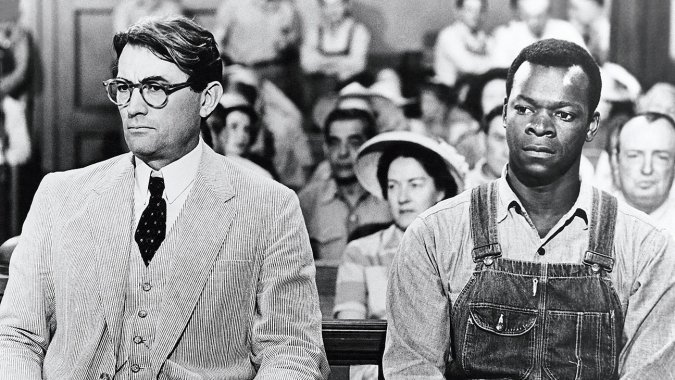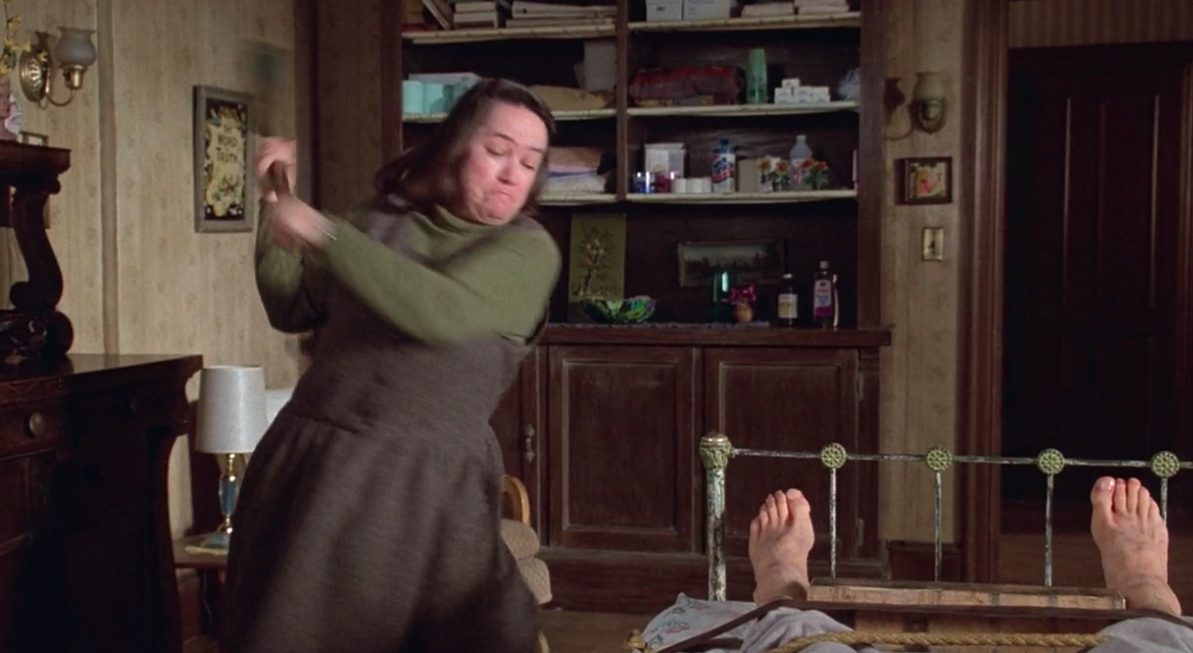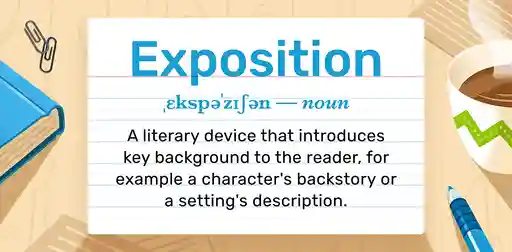Last updated on Apr 19, 2024
How to Create Suspense in Your Writing (in 5 Thrilling Steps)
About the author
Reedsy's editorial team is a diverse group of industry experts devoted to helping authors write and publish beautiful books.
More about the Reedsy Editorial Team →Savannah Cordova
Savannah is a senior editor with Reedsy and a published writer whose work has appeared on Slate, Kirkus, and BookTrib. Her short fiction has appeared in the Owl Canyon Press anthology, "No Bars and a Dead Battery".
View profile →Your job as a storyteller is to make your reader desperate to know what happens next. In that sense, suspense is an essential tool in any writer’s toolbelt. But just what is suspense, and how can you weave that gripping tension into your own works of fiction?
In this guide, we’ll give you the lowdown on recognizing suspense in your favorite books before mastering the art of keeping your readers on tenterhooks. Will we reveal the secrets of writing suspense? Keep reading, and you’ll soon find out… or will you?

NEW REEDSY COURSE
How to Write a Novel
Enroll in our course and become an author in three months.
What is suspense in literature?
Suspense is the tension a reader feels when they're not sure what will happen in a story. This can either occur over a single scene or chapter — or throughout an entire narrative arc. You might create suspense around anything that stokes readers’ curiosity, be it a love triangle (will they or won’t they?) or a killer on the loose (can the detective catch them before they kill again?).
A writer will use suspense in a story to:
- Heighten tension in a dramatic scene
- Conceal answers you don’t want to give away
- Build up to a twist and make it more powerful
- Keep your reader turning the pages!
While suspense is most frequently employed in mysteries and thrillers, it should be present in every work of fiction. After all, curiosity is what compels readers to finish your book! However, the amount and type of suspense you use depends on how you want to shape your reader’s experience. For example, you want readers of your light romance to feel tension at the possibility that your lovers don’t get together in the end — but not so much tension that they start to feel uneasy!
So what kinds of suspense do writers have at their disposal?
5 types of suspense (with examples)
In this section, we’ll discuss five types of suspense found in storytelling, which fall into two categories: narrative suspense and short-term suspense. The first engages the reader with the central issue of the narrative, while the second keeps them intrigued minute to minute. A good story should have both.
1. Narrative suspense (long-term)
While technically, any literary suspense might be described as “narrative,” this refers to tension that builds throughout the entire story. In narrative suspense, you pose a question, problem, or mystery at the beginning of the book, divulge more about it as the plot progresses, and wrap it up near the ending.
Well-written narrative suspense makes it nearly impossible for readers to put down your book. However, that means the payoff has to be huge — if you’re going to tease readers for 300 pages, you need an incredible ending! This is part of why suspenseful stories often culminate in a plot twist or big reveal (or both, as in the arc of Amy’s disappearance in Gone Girl).
When constructing this kind of suspense, you want to hint at its resolution continuously. But you also don’t want to overwhelm your readers. The constant pressure of an impending reveal can make them feel overly anxious as well as impatient. With that in mind, temper this pressure with moments of character-based humor, non-suspenseful plot progression, or even a different suspense arc, as in the example below.
Example: To Kill A Mockingbird
In To Kill A Mockingbird, we observe the story from the perspective of Scout, a young girl in the Deep South whose father, a lawyer, is defending a black man accused of a heinous crime. There are two strands of narrative suspense that run throughout the book:
- What will happen to Tom Robinson, the man Atticus Finch is defending in court, and
- What is the truth about Boo Radley, Scout and Atticus’s reclusive neighbor who is the topic of a local urban legend?
Both issues are introduced near the beginning, gain traction throughout the story, and eventually collide at the end when Boo Radley saves the kids from the villainous Bob Ewell after the trial’s conclusion.
Having more than one arc of narrative suspense keeps the reader invested and gives the story added depth. Short-term suspense, which we’ll discuss in the next section, can also accomplish these goals.

2. Short-term suspense
Short-term suspense is just what it sounds like: a moment or brief scene of suspense that provokes a powerful reaction from the reader. This may tie in to the book’s long-term tension or alternately can serve as a distraction or subplot.
Instances of short-term suspense usually involve a discussion or confrontation between characters that are quickly settled, though it may resurface later. For example, the initial flare of tension between Elizabeth and Mr. Darcy at the first ball in Pride and Prejudice lays the groundwork for their continuing contentious relationship.
One of the best applications of short-term suspense is to create cliffhangers — scenes or chapter endings that leave the reader desperately in suspense. Just as Scheherazade would cut off her stories so the sultan would let her live, cliffhangers cut off your story at critical moments — when the only thing the reader wants to know is what happens next.
Example: Truly Madly Guilty
Liane Moriarty (the contemporary queen of short-term suspense) ends several chapters of her bestselling novel with irresistible cliffhangers like this:
There was a tremendous crash of crockery and an extraordinary scream that tore through the night: “Clementine!”
Immediately, a lot of questions should be racing through the reader’s head: Who’s screaming? Was somebody attacked? And is our protagonist, Clementine, to blame? The suspense doesn’t linger long, as we find out why this character is screaming within the next couple of scenes. Nuggets of short-term tension like this are always quickly resolved, which helps engage readers page by page while balancing out the slow burn of narrative suspense.
Now that we’ve covered structural suspense, let’s get into specifics. The following categories of suspense depend on your book's genre and style; though they can be combined, you don’t necessarily need all of them.
3. Mysterious suspense
Mysterious suspense is the most traditional form of suspense, often used in thrillers and, of course, mystery novels. Though all suspense involves mystery in one way or another, mysterious suspense differs in that something is deliberately concealed from the reader. They know they don’t have the whole truth, and it keeps them on their toes.
This kind of tension can be used in the short term, but it's most famously employed across entire narrative arcs (think Agatha Christie). If you decide to do this, however, you need to add something unique to prevent your story from becoming predictable — whether it's a highly original premise, an excellent plot twist to resolve the mystery, or both.

Example: Jane Eyre
Jane, the new governess at Thornfield Hall, observes a pattern of strange occurrences, such as an unexplained fire and an attack on a guest. Her employer, Mr. Rochester, reassures her that these incidents are merely the result of a servant’s erratic behavior. Jane soon becomes engaged to Rochester, and she thinks no more of these events.
However, during their wedding ceremony, a man steps forward to announce that Rochester is already married. It’s revealed that his mentally ill wife was in the attic and that she was the source of all the incidents. Rochester was hiding her away all along in order to keep Jane (and the reader) from discovering the truth.

4. Horrific suspense
Horrific suspense is when the reader knows something awful is going to happen, but the precise nature of it remains unclear — like waiting for a jump scare in a movie. As one might expect, it’s most common in horror and sometimes thriller novels.
Though it overlaps somewhat with mysterious suspense, horrific suspense differs in that it’s less vague and more expected. Also, horrific suspense is typically used in the short term rather than the long term because it’s less satisfying than solving a mystery: it is more about shock value than satisfaction.
That’s not to say mysterious and horrific suspense can’t be combined. A novel might contain elements of both, especially if it’s a murder mystery. Agatha Christie’s And Then There Were None, for example, seamlessly intertwines mysterious and horrific suspense throughout its arc, making the reader question both “whodunnit?” (mystery) and “when will they do it again?” (horrific).
Pro tip: horrific suspense is also very prominent in true crime! For a first-rate lesson in creating suspense in nonfiction, try reading some of the best true crime books out there.
Example: Misery
Stephen King’s books are chock full of horrific suspense, but few scenes are more horrific than the infamous “hobbling” scene in Misery.
After bestselling author Paul Sheldon crashes his cars in the wilderness of Maine, he wakes to find he is being tended to by nurse Annie Wilkes, who is, as she says, his “biggest fan.” As time progresses, Paul realizes that Annie is dangerously unstable. Before Paul can make his escape, Annie discovers that he’s been leaving his room while she’s been out. What comes next is a masterclass in mounting dread.
Annie slowly reveals how Paul is to be punished. She casually reveals that he’s been given a “pre-op shot” (“His mind was spinning and diving like an out-of-control amusement park ride. Pre-op shot? Was that what she had said? Pre-op?”). From there, Annie begins to talk about the Kimberley diamond mines and how the British would treat native workers who stole diamonds, and Paul’s immediate fate starts to come into focus. Annie brutally chops Paul’s foot off with an axe and cauterizes it with a blowtorch.

Though this is a moment of shocking brutality, it is made all the more impactful by the fact that King builds up to it gradually and ramps up the horrific suspense.
5. Romantic/comedic suspense
Romantic or comedic suspense may also occur when the reader doesn’t know what’s going to happen, though this tension is typically lighter than other forms of suspense. Think back to our Pride and Prejudice example: “Will they get together?” is the question at the heart of any romantic comedy.
Romantic suspense may occur in lighthearted or more dramatic fiction, such as harlequin romances. Comedic suspense, on the other hand, almost exclusively occurs in farce. One well-known form of this is dramatic irony, in which the reader knows something that not all the characters know, and is waiting to see how they’ll react.
Example: Twelfth Night
In Shakespeare’s comedy of hidden identities, shipwrecked Viola disguises herself as a young man in order to act as a servant to Duke Orsino. As part of her duties, Viola (calling herself Cesario) must deliver messages of love to Olivia, the object of the Duke’s affection. However, this plan backfires when Olivia instead falls for “Cesario” — who is, of course, Viola in disguise. Meanwhile Viola herself has fallen for the Duke, creating a most unusual love triangle.
While most of Shakespeare’s audiences would naturally expect the characters to pair off by the end of Act V, he keeps their interest throughout the play by making them wonder who will end up married to whom.

Now that we’ve seen the many ways that suspense can rear its head in a narrative let’s put you out of your misery and talk about how you, too, can become a master of suspense.
How to create suspense
Though there are many combinations and manifestations of tension in literature, mysterious narrative suspense seems to be what most people struggle to achieve. As a result, these tips will focus on that type.
1. Keep your readers hungry
Lee Child, author of the Jack Reacher series, likens suspense to making a cake: there are a hundred ways to do it, but how do you make sure it’s delicious?
By not feeding your guests all day, you can ensure that by the time they get their hands on that cake, it’ll be the best thing they’ve ever eaten.
You need to do the same thing with the suspense in your story. Build it up for as long as you can, teasing your audience with possible answers and making them hungry for more. Subtly reference a piece of your suspense arc as early as possible. Then make them anticipate each individual ingredient, agonizingly building to the final product.
That way, when your readers finally do get their cake — the big reveal or resolution — they’ll be ready to gobble it up.

2. Foreshadow important elements
Foreshadowing is a simple means of indicating something important, even if the reader doesn’t know why. Some foreshadowing doesn’t become evident until the very end of a book, like the train accident early in Anna Karenina. However, other foreshadowing easily clarifies itself to the reader and helps them make an educated guess about the resolution.
Strong foreshadowing techniques include:
- Presenting a significant object or character that returns later in the plot
- Seeming to reveal a secret but neglecting the context or other key details
- Unusually vague or cryptic turns of phrase
3. Use flashbacks
Flashbacks are a great way to ratchet up suspense, whether it’s an isolated flashback that shows something shocking or a series of flashbacks that build toward the final reveal. Some novels even maximize the dramatic impact by setting their narratives half in the present day and half in flashbacks. (Jodi Picoult and Gillian Flynn are great proponents of this technique.)
No matter how you use flashbacks, however, they need to mean something in the story. You can include a red herring in your flashbacks, but the whole thing can’t just be a diversion, or your reader will feel betrayed. That goes for content as well as tone — flashbacks should read as vividly and intriguingly as the present-day narrative and shouldn’t feel like a distraction but an augmentation to the plot.
4. Put characters in jeopardy
Placing your characters in a dangerous situation is the ultimate recipe for sudden suspense (remember Stephen King’s method in Misery). It’s especially helpful when you’re approaching the climactic point of your mysterious suspense arc and need to escalate it with some short-term horrific suspense.
This technique only works if readers already care about your characters, which is why it works so well at the end of a novel. Make sure the threat is realistic and has been intruding on the characters the whole time, whether they realize it or not.
Example: The Girl on the Train (spoilers ahead!)
In Paula Hawkin’s hit domestic thriller, our protagonist is Rachel, a woman whose life, career, and marriage have come apart at the seams as a result of her alcoholism. She becomes obsessed with a woman she observes through the window of her train every day — and finds herself in the middle of a mystery when this woman goes missing.
The suspense of this mystery — what happened to this missing woman — takes on a new dimension with the twist that Rachel’s ex-husband killed Megan (this mystery woman). This ramps the stakes up significantly: whereas before, the worst-case scenario for Rachel was that Megan would never be found, she now realizes that her very life is at risk. Maximum jeopardy!

5. Stay one step ahead
It can sometimes be hard not to include hints the way you’d want them as a reader: crystal clear, so you can guess the outcome easily. But well-done suspense successfully cloaks its plot in obscurity, resulting in the hard-earned satisfaction of the resolution. This means staying ahead of your reader in order to keep them on their toes.
As you write, don’t employ hints too obviously or frequently, and throw in some distractions or red herrings where you, as a reader, would be looking for clues. The key here is to hint at several different outcomes throughout the story so that the reader can speculate without getting too close to the actual resolution — unless they’re a great detective, as you should be by now!
All these tips, as well as your newly acquired knowledge of its various incarnations, have officially made you a master of literary suspense. Just think: you could be the next Liane Moriarty, Stephen King, or even Agatha Christie. Whichever it is, don’t leave us in suspense.








1 response
Glorious Chronicles says:
30/09/2018 – 21:04
Very helpful article, thanks for sharing. I have also created a new blog please check it out. URL- https://gloriouschronicles.com/